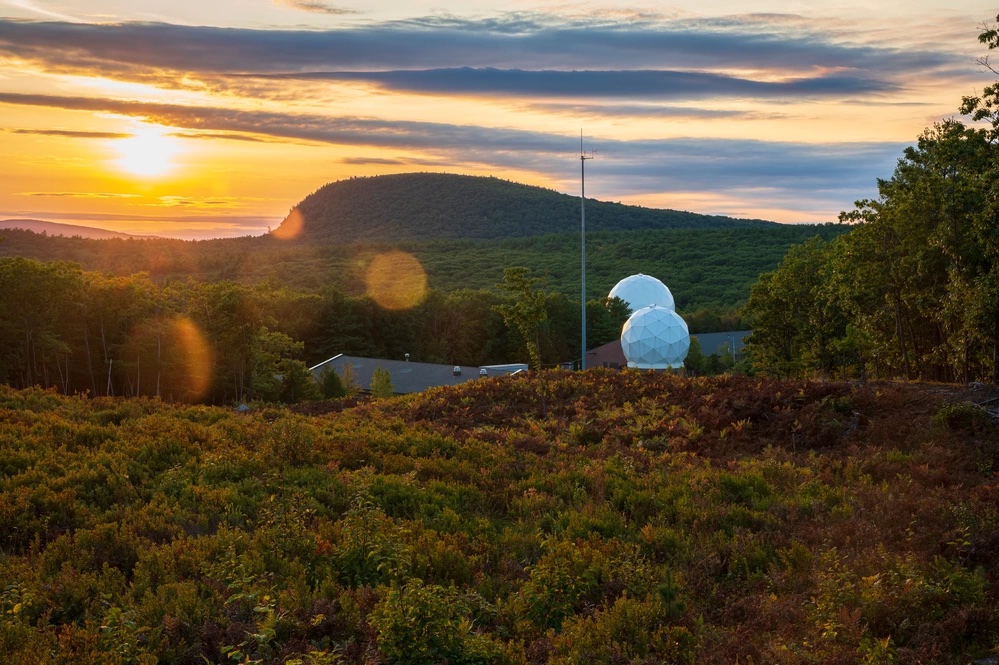Orlando, FloridaThe head of the Space Rapid Capabilities Office, which is charged with rapidly delivering cutting-edge and often classified technology to the Space Force, has made key progress in modernizing aging systems used to control U.S. government satellites, the head of the Space Rapid Capabilities Office revealed last week.
Additionally, the secretive organization this year deployed threat-aware sensors in geostationary orbit that have yielded intelligence on foreign capabilities, director Kelly Hammett told reporters at the Space Force Association’s Space Force conference.
Compared with the Space Force’s other two acquisition components (Space Development Agency and Space Systems Command), the Space RCO discloses little about its functions. But Hammett did say that his organization and portfolio continue to grow as they take on new projects and increase workload on others.
Perhaps the most high-profile project for this office is the Satellite Communications Augmentation Resource (SCAR), which will provide a much-needed upgrade to the Satellite Control Network (SCN)
The SCN consists of 19 antennas scattered around the world, from Diego Garcia in the Indian Ocean to the village of Oakanger in southern England to Schriever Space Force Base in Colorado, to track satellite positions and collect reports on their health and status. , and sends signals to control its subsystems, such as power, antennas, and mechanical and thermal controls.
But these antennas are old. Hammett pointed out that technically they are the Pentagon’s second-oldest active weapons system, behind the B-52 bomber, and can only maintain communication with one satellite at a time, which is important given the increase in the number of satellites in orbit. This situation is becoming increasingly difficult to maintain. .
According to SpRCO, SCAR will enhance the SCN with an electronically steerable phased array antenna that can connect to multiple satellites simultaneously, thereby increasing communications capacity tenfold. The office awarded BlueHalo a $1.4 billion contract in May 2022, and in August 2023, the program completed a one-meter demonstration, clearing the way for production of a full-scale radar, Hammett told reporters in Orlando. .
Hammett added that the first radar is expected to be delivered in March 2025, but SpRCO’s work has not slowed down while waiting.
Hammett said, “We’re actually working very hard right now on how to deliver the SCAR system, how to modernize the SCN, and how to integrate a comprehensive roadmap for modernization of the Space Force.”
In particular, Hammett said, the office worked with other Space Force organizations to finalize the first location for the SCAR antenna, which he could not disclose.
Infrastructure improvements at the site are underway, Hammett said. So they’ll be ready for us when we deliver the first device in 15 months, and there’s a big gap because we haven’t worked out all the details yet, and we deliver the first device, Then it sits there or somewhere in the vendor’s facility. We don’t want this to happen. We hope these things can be deployed and used in a timely manner.
Having SCAR in place is particularly important to the Space Force given its growing interest in so-called dynamic space operations, which involve the maneuvering of satellites within and between orbits to conduct defensive and offensive operations.
Currently, the motion of most satellites is defined by station keeping, or ensuring that they stay in the proper position in their orbit. Hammett noted that broader exercises will require more robust command and control, and that C2 will have to actually get to the antenna and tell the satellite, “Well you move here, then you move here.” And it all has to be done nearly instantly.
哈米特補充說,太空RCO 還在開發一個名為快速彈性命令和控制(R2C2) 的項目,該項目將提供此類控制所需的軟體,目標是在大約三個月內為演示項目提供工作software.
Also in 2023, RCO launched its first satellite in January. At the time, the Space Force described two of the three payloads launched as being used to enhance situational awareness, but little was revealed about their purpose or results.
Hammett declined to provide many details about the payload, but he did say they completed testing and inspection within about 60 days of launch.
Hammett added that they have been flying in geosynchronous orbit and collecting data. We learned a lot of interesting data that I can’t go into detail about, but I can say that the data has been shared with the intelligence community and it’s changing intelligence estimates of certain foreign capabilities.
Now, the Space RCO is working with other parts of the Space Force to spread these sensors to other parts of the enterprise, Hammett said.
#Space #RCO #Director #Efforts #modernize #aging #networks #satellites #track
Image Source : www.airandspaceforces.com
